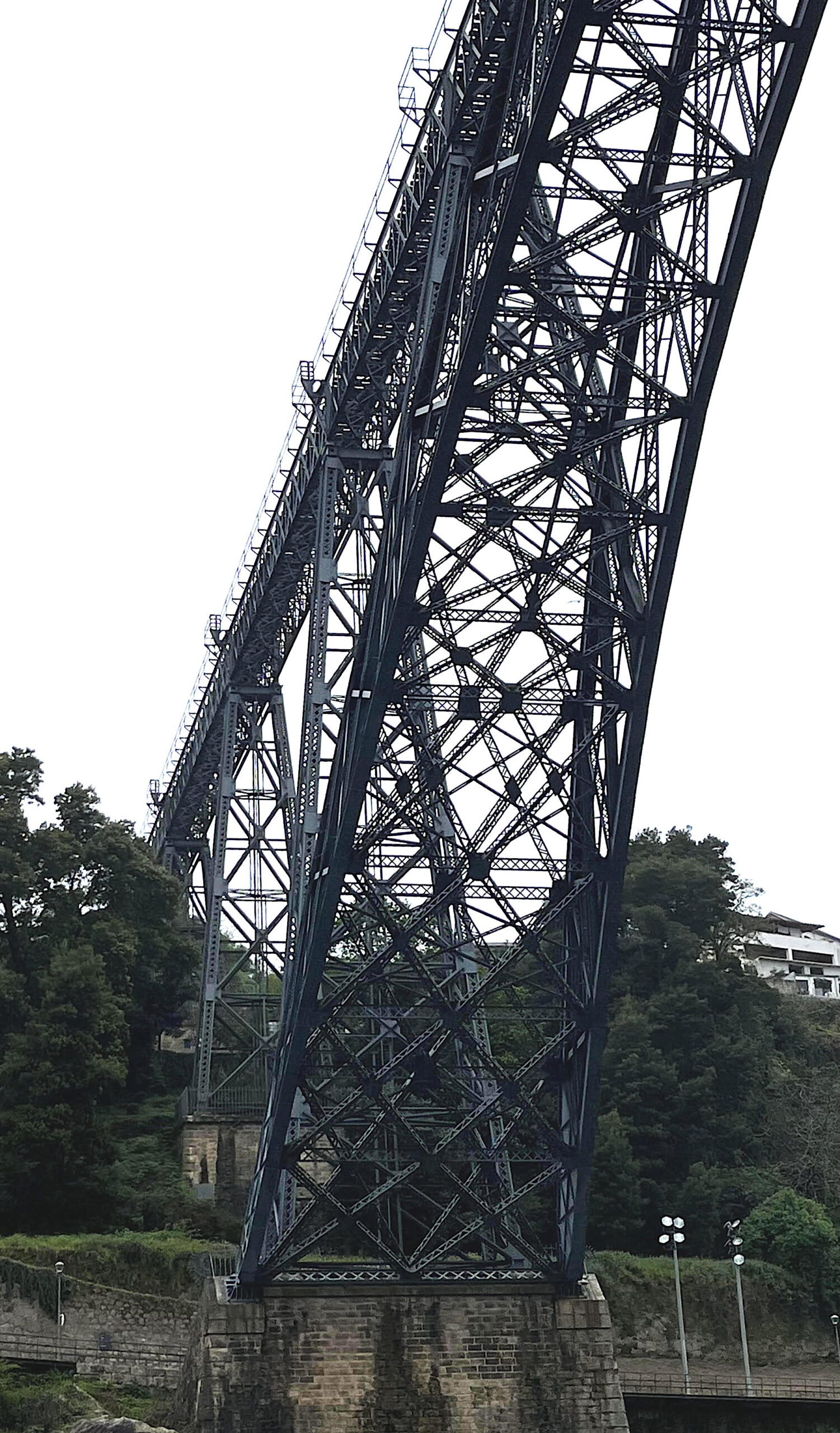
This image was taken from the Douro River in Porto, Portugal, looking up at the cast iron bridge designed by Gustave Eiffel in 1875.
It was a submission to a competition held by the Royal Portuguese Railroad Company for a bridge to span over 520 foot — which was the greatest span ever attempted at that time. One might think Eiffel’s proposal was accepted due to its bold use of the latest technology or perhaps its sheer beauty. However, it was likely the cost of constructing the bridge that closed the deal. His proposal was an astounding 1/3 less than his nearest competitor. The bridge was considered such a feat that scholarly papers were written and a 1:50 model of the design, accompanied by drawings and calculations, were exhibited at the 1878 World’s Fair. Construction of the bridge began in 1876 and completed in 1878.
This bridge was the precursor and laid the groundwork for his better-known work in Paris — the Eiffel Tower. The Iron Lady was constructed as the centerpiece for the 1889 World’s Fair and to mark the anniversary of the French Revolution. At 1,083 feet, the tower was the tallest structure in the world when it was built — a distinction it held for over 40 years. It is still the tallest structure in Paris today and attracts close to six million visitors per year. It is hard to imagine but the tower was highly criticized by the artists and architects of the day.
Their opposition centered on a long-standing debate regarding the relationship between architecture and engineering. This excerpt of a protest letter from the “Artists against the Eiffel Tower” gives you a sense of the intense opposition:
We, writers, painters, sculptors, architects and passionate devotees of the hitherto untouched beauty of Paris, protest with all our strength, with all our indignation in the name of slighted French taste, against the erection … of this useless and monstrous Eiffel Tower … To bring our arguments home, imagine for a moment a giddy, ridiculous tower dominating Paris like a gigantic black smokestack, crushing under its barbaric bulk Notre Dame, the Tour Saint-Jacques, the Louvre, the Dome of les Invalides, the Arc de Triomphe, all of our humiliated monuments will disappear in this ghastly dream… stretching like a blot of ink the hateful shadow of the hateful column of bolted sheet metal.
Perhaps there has always been an uncomfortable tension between new technology and what, at any particular time, is accepted as beautiful and appropriate. What seems to overcome this natural resistance to innovation is a solid pragmatic foundation developed over time.
